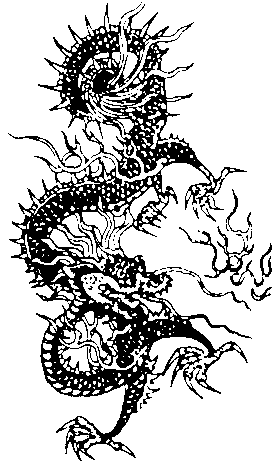DRAGON Professional and Academic Editions
 |
DRAGON/ips™ provides a robust suite of image analysis and geoprocessing
operations, via an intuitive, responsive, multi-window graphical user interface.
Designed for university teaching and research, Dragon takes the mystery out of geoinformatics,
allowing professionals to learn new and valuable techniques, and encouraging students to
approach problems in a structured, step-by-step manner.
The latest version of Dragon continues to offer
users full-color display, annotation, enhancement, measurement,
supervised and unsupervised classification, georeferencing, on-screen
vector capture, raster modelling, and a broad range of other
capabilities to support geoinformatics education and research. The
graphical user interface provides concurrent help as well as
context-sensitive interactive access to the full user
manual. Command-line and script-based operation modes are also
available to streamline the work of instructors and researchers.
Dragon allows students and
researchers to work in their native language. The software is fully
internationalized, providing prompts, help, and error messages in
multiple languages, as well the ability to annotate images and save
multi-lingual descriptive text.
Dragon uses an innovative client-server
architecture that is based on platform-independent
industry standards including Java, XML and
HTML. Dragon currently runs on Windows Vista,
Windows 2000, Windows XP, Vista, and Windows 7.
Note that Windows 95/98/ME systems are
not supported. Linux/Unix/MacOSX compatibility
will be available at a future date.
Dragon Professional Edition provides the professional user with the ability to process full-scene
images (up to 32,000 rows and columns), in an economical, easy to learn and easy to use package.
Dragon Academic Edition provides the student and teacher alike with convenient
processing of limited-size images. The restricted image size (currently 1024 x 1024) permits intuitive use and extremely fast
processing even on a PC with limited resources.
|
Dragon Capabilities
- Display
Examine data from satellites, aerial photography and Geographic Informations Systems in full color, in pseudo-color, or in gray. Visually overlay one image on another. Compare images across multiple windows. Zoom images to view them in greater detail, or scroll to examine hidden areas. Annotate images with internationalized (Unicode) text and color-patch legends. Create color schemes for classification displays or density-slicing.
- Enhance
Transform digital images to highlight information or to suppress noise. Apply linear or non-linear contrast adjustment. Compute standard arithmetic combinations including sum, difference, and ratio. Perform filtering, vegetation assessment and classification post-processing. Apply a mask to restrict processing to specific study areas or regions of interest.
- Classify
Assign each point in a digital image to the appropriate category of ground cover, land use or other surface characteristics using maximum likelihood, minimum distance to mean, or boxcar supervised classification. Alternatively, assign image points to classes based on the structure inherent in the image data ("unsupervised classification"). Select samples to define each supervised classification category, directly or by reference to GIS or other ancillary raster data set. Display and edit sample histograms and statistics. Recode classified or other images based on simple or complex rules.
- Register Images
Identify and evaluate control points. Rectify or geometrically correct images, registering them to maps, other images, or standard coordinate systems.
- Measure and Analyze
Interactively display data values and radiometric profiles. Measure lengths, perimeters and areas. Display histograms, scatterplots, and image statistics. Create and analyze polygon overlays. Import, export, or rasterize vector data files. Extract irregular subareas to exclude irrelevant data or create a mask.
- Build GIS Models
Calculate slope and aspect from elevation data. Define fixed width buffers around features of interest. Combine image data and raster GIS layers to produce new information and support decision making.
- Communicate across Applications
Load a subset of an image file, or save processing results in a new image file. Exchange Dragon results with other image processing and GIS packages. Capture annotated images as graphics files for use with desktop publishing packages. Save reports as HTML for importing into web or other documents.
- Teach and Learn
Access the full user manual interactively from
within Dragon to obtain descriptions of and
details on the current Dragon operation. Create
scripts to automate common functions and provide
student examples. Provide common datasets for
teaching via a networked file server. Use the
Teaching Packs for Dragon as the basis for
introductory labs in remote sensing digital image
processing.
- Dragon Speaks Your Language
Dragon is fully internationalized, and supports
multiple languages including English, Chinese
(Traditional), Turkish, French, Spanish, Russian, Czech,
Thai, Indonesian, and Brazilian Portuguese. Other
language versions are under development. Contact
Goldin-Rudahl Systems for the latest information
on foreign language versions, or to discuss
translating the software into your own
language.
|